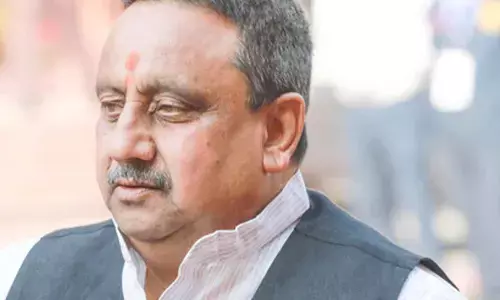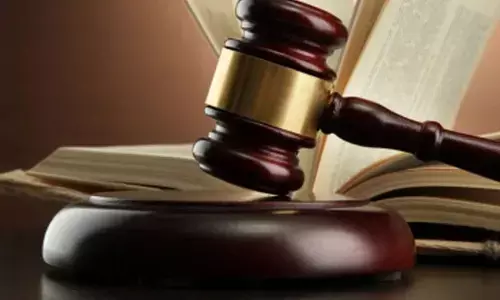Pezeshkian prevails over Jalili: Decoding the dynamics of a vital Iranian election
Share :

Heart surgeon Mahmoud Pezeshkian was on Saturday declared Iran's next President, convincingly defeating former nuclear negotiator Saeed Jalili in the run-off by nearly 3 million votes to become the second non-cleric holder of the post.
New Delhi: Heart surgeon Mahmoud Pezeshkian was on Saturday declared Iran's next President, convincingly defeating former nuclear negotiator Saeed Jalili in the run-off by nearly 3 million votes to become the second non-cleric holder of the post.
While it can be seen simply as the reformist prevailing over the hardliner, the implications are deeper - and revealing about Iran's political dynamics.
Let's begin with the figures.
In the first round on June 28, Pezeshkian led with 10.41 million votes, while Jalili was not far behind with 9.47 million, out of the 24.5 million votes cast, or just about 40 per cent of the 61 million-odd electorate.
Prepoll favourite - Majles Speaker Mohammad Baqer Qalibaf - was a distant third with 3.38 million votes, while sole cleric Mostafa Pourmohammadi got only 206,397 votes.
As the poll went into a run-off, Qalibaf, as well as two other conservative candidates who had withdrawn before the polls, called on their supporters to back Jalili.
The combined votes of Jalili and Qalibaf would have been enough to propel the former to victory - provided that the turnout had remained constant or not gone up significantly.
However, in the run-off on Friday, the polling percentage rose to around 50 per cent, as Pezeshkian secured 16.3 million votes (55.3 per cent) to Jalili’s 13.5 million (44.3 per cent).
While it seems that Pezeshkian's relatively strong showing in the first round and promises of looser social curbs and negotiations to relieve sanctions convinced some of the 60 per cent of the absent voters to shed their apathy and come out to cast their ballot, it is also likely that the conservatives too mobilised more of their supporters.
The upshot is that all the votes that Qalibaf had garnered did not seamlessly transition to Jalili's account. While after the first round, several of his supporters, including his poll campaign manager, had openly declared that they would support Pezeshkian in the run-off, it seems the sentiment went in much deeper in his core support base.
Qualitatively too, the result offers some compelling insights.
Pezeshkian's vote base was not only the young and disenchanted voters or the country's ethnic minorities - given he is an Azeri himself - but some senior Iranian Revolutionary Guard Corps (IRGC) officials and high-ranking clerics too had come out in his support, apart from notable reformists like former Presidents Mohammad Khatami and Hasan Rouhani.
Former Foreign Minister Javad Zarif was a mainstay of his election campaign.
On the other hand, Jalili, despite his close links to the Supreme Leader and the IRGC, was, by no means, the unanimous choice of the establishment.
Though Pourmohammadi, who was the real sensation of the election with his liberal stance on most issues and the acknowledgment of the concerns and aspirations of the absent voters, did not endorse anyone explicitly, his criticism of Jalili's past actions on FATF recommendations indicated where his preference lay.
What this seems to suggest is that despite appearances and (chiefly Western) perceptions, neither is the Iranian establishment a monolith structure, nor is Iranian politics limited to just two opposing distinct and united reformist or conservative camps, but is a more fluid system due to many different sub-groups with their own agendas and aspirations.
This is true of the clerical establishment as well as the all-powerful (IRGC) - widely perceived as a state within the state.
And then, Pezeshkian's victory - on his second bid (he was not allowed to run in 2021) - restored the cyclical reformist-moderate/conservative-hardliner trend in Iranian politics, dating back to the 1989 Constitution.
He has also become the second layman President after populist conservative Mahmoud Ahmadinejad (2005-13), who also came to power after winning the run-off in 2005.
The future course of Pezeshkian is scarcely enviable. He will soon make good on his promises to the people on social justice and rights - especially, curbing the Morality Police, ending the economic malaise and high inflation, and on the other hand, move to negotiate the end - or at least, a moderation - of sanctions.
All this entails challenging domestic and foreign dimensions. At home, he will have to strike a balance between public expectations and the establishment's requirement to avoid disturbing the status quo.
On the external front, he will have to deal with the ongoing Gaza crisis and the outcome of the US elections later this year - with the prospect of the return of Donald Trump who had pulled the plug on the nuclear deal, adding to the headache.
The rest of the West also does not seem very receptive, given that there haven't been congratulatory messages from Europe, unlike the Russian, Arab, Chinese, Indian, and Pakistani leaders.
Winning the election was less onerous, it seems.

















